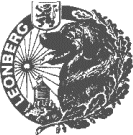When do the crevices of your dog's bones close?
It is very important to wait with intensive training (if it just has to be) until you can make sure that no trauma or fractures can occur in the young bones.
Controlled exercises help so that the joints can develop healthily and the bones become strong. The most suitable is of course the natural movement (free running would be ideal) of the dog - without tearing the leash, without constraints (of whatever kind), without chest harness, without training / agility, without growth hormones (the dog's body has it in the Cells already written at birth how big and when he will grow up, additional hormones only interfere with growth). I beg you all, on behalf of your dogs - just let the dogs be dogs. Most damages arise 1. from ignorance and 2. because you put your own ego in front of the dog ..... And important! Do not castrate early! This is not only an NO GO in terms of health (important information that is transported to the brain and is important for development is prevented, ... bones are also affected) - but also an enormous psychological burden for the dog - especially anxious It is extremely harmful to dogs. Please let your dogs develop completely (if possible, do not neuter them so that they can communicate normally with each other later - conspecifics).
We don't do that with our children either. They are not neutered in kindergarten or elementary school and child labor is forbidden anyway. Why are they doing it to the dogs? The healthy organs are not there to be cut off.
Photo source: Ilona Pižlová FB Fund
Exercise demand of young dogs Exercise is good - but overload is not
Young dogs have a high urge to move.
But those who demand too early and too much of their protégé quickly risk overloading the entire musculoskeletal system. Chronic diseases can develop as early as puppyhood, which physically restrict the dog for a lifetime. If you notice that your darling is "twisting" at the front or back, please consult a veterinarian and get suitable medication or feed additives to strengthen the ligaments.
Running - a dog's survival instinct
A puppy that happily chases after its owner even after a long walk is not necessarily a very active, sporty dog. In many cases, it is a puppy with a strong instinct for survival. He has to follow the pack, cover up exhaustion and not be left alone. Otherwise it would starve to death or fall prey to predators after a short time in the wild.
Per month of life
do not walk for more than 5 minutes at a time
According to this rule of thumb, a 5 month old puppy shouldn't run longer than 25 minutes continuously every day. In addition, there are of course many small movement units in which the puppy can loosen and move freely. During this time you shouldn't motivate the dog to move, but let him decide for himself what he wants to do. This encourages the dog's creativity, and he learns early on that he has no pressure to perform in his home and that he does not always “have to” do something.
If possible, do not climb stairs for up to approx. 8 months. Please also avoid so-called stop and go games.
Jumping and dog sports only in adulthood
Dogs of large breeds should neither be involved in sports nor exposed to great everyday stress until they are 24 months old. Climbing stairs, getting in and out of the car or jumping over obstacles, e.g. over tree trunks in the forest, should be avoided. The sudden weight load damages the still young, immature joints, bones and muscles. Hiking tours with steep ascents and descents, long walks on the bike, but also ball games in which the dog suddenly has to slow down at full speed should be postponed to adulthood in order to keep your young four-legged friend healthy.
Detect overload
If the dog suddenly lies down from play, shows lameness or noticeably relieves a limb, caution is required. To clarify the situation and prevent worse things from happening, the animal should be examined immediately by a veterinarian.
Correctly assess the amount of exercise
But it is so easy to have a lot of fun with your dog without overloading him physically. During a leisurely picnic by the lake, dogs can decide for themselves whether they want to move or lie with their owners to sleep. Swimming is a gentle sport that builds stamina, muscles and flexibility. Dogs can really let off steam in the water. However, it is also important here to never overtax the dog.
Sedentary lifestyle and obesity
Lack of exercise can weaken the muscles and lead to excessive and incorrect strain on the musculoskeletal system. The same applies to overweight dogs. Both usually influence each other unfavorably.
Adult dogs
When the time for dog sports has come, it needs a slow and gentle acclimatization. Whether agility, flyball, obedience or one of the many other dog sports, as with every athlete, warming up is the alpha and omega. Stretching exercises, stretching and light movement while trotting are useful to warm up the muscles and reliably prevent overload.
(Source: Dr. M. Scherer)





